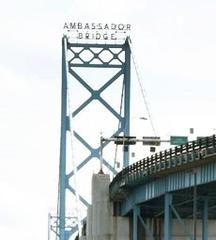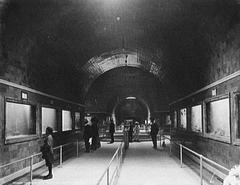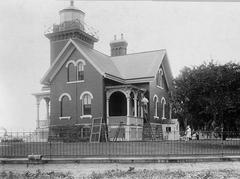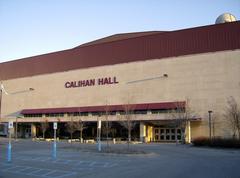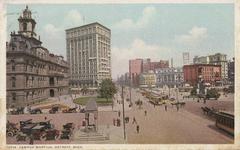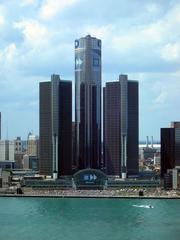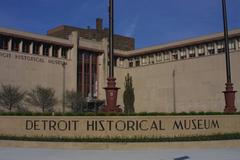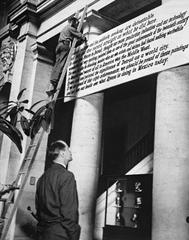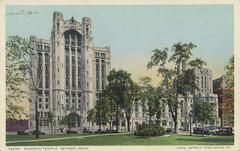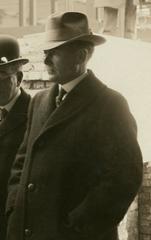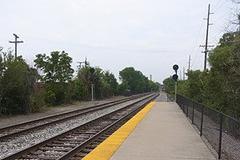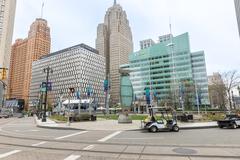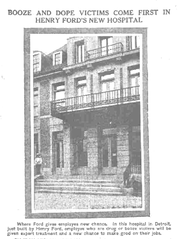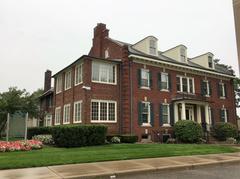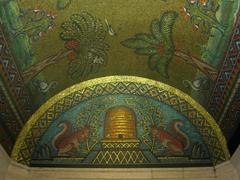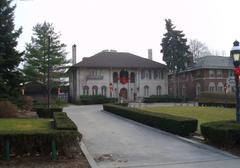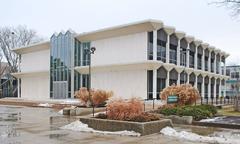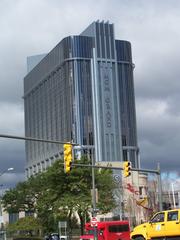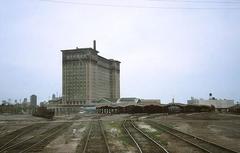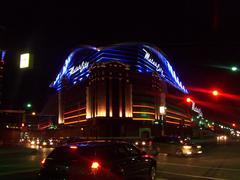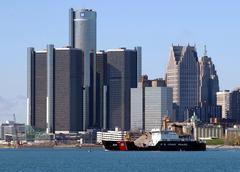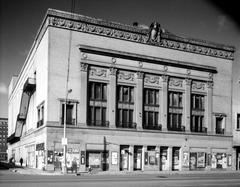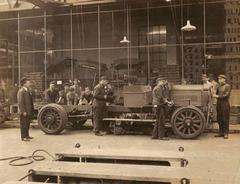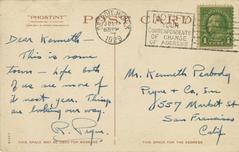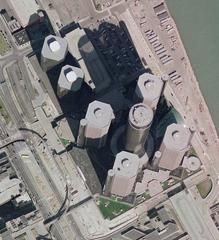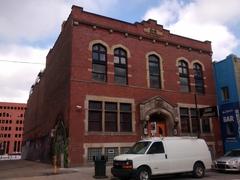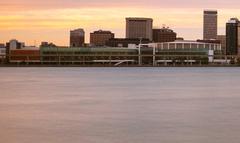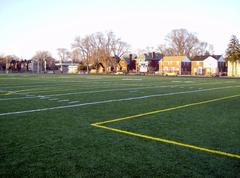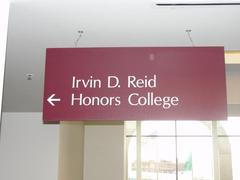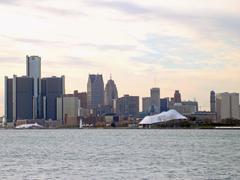
Moross House: Visiting Hours, Tickets, and Historical Significance in Detroit
Date: 04/07/2025
Introduction
Moross House, Detroit’s oldest surviving brick residence, stands as a living testament to the city’s early 19th-century heritage. Located at 1460 E. Jefferson Avenue in the historic Rivertown district, this meticulously preserved home showcases rare Federal and Greek Revival architectural styles and embodies the city’s transformation from a frontier settlement into a thriving urban center. Built in 1840 by Christopher Moross—a French-descended brickmaker and local entrepreneur—the house not only reflects the prosperity and ambitions of its era but also anchors Detroit’s ongoing cultural revival. Today, Moross House functions as a vibrant cultural hub, hosting community events, art exhibitions, and educational programs within its historic walls and lush gardens (SAH Archipedia; Detroit Historical Society; Visit Detroit).
Table of Contents
- Origins and Construction
- The Moross Family and Early Detroit
- Architectural Significance
- Visitor Information: Hours, Tickets, and Tours
- Later Uses and Preservation
- Historical Recognition and Community Role
- Restoration and Interpretation
- Visual Gallery
- Frequently Asked Questions (FAQ)
- Nearby Attractions and Planning Tips
- References
Origins and Construction
Constructed in 1840 by Christopher Moross, the Moross House is Detroit’s oldest extant brick residence. Moross, born into a French-descended family, made his fortune in brickmaking and invested in building this two-story home during a period of rapid city growth. The use of brick—a rarity at a time when most local houses were wooden—signified durability and affluence. The house’s Federal-style symmetry, three-bay façade, and stone lintels above the six-over-six sash windows, along with paired end chimneys, all contribute to its historic character (SAH Archipedia).
The Moross Family and Early Detroit
The Moross family played a prominent role in Detroit’s early business and civic life. Their investment in brickmaking and real estate symbolized the city’s transition from a frontier outpost to a sophisticated urban center. The Moross House, originally standing in a fashionable East Jefferson Avenue neighborhood, was both a family home and a symbol of the family’s status and aspirations within the burgeoning city.
Architectural Significance
Moross House is a rare example of Federal and Greek Revival domestic architecture in Michigan. Federal features include the symmetrical façade and restrained ornamentation, while Greek Revival elements such as the transom, sidelights, and cornice moldings add classical flair. The craftsmanship is evident in the locally sourced bricks, original hardwood floors, and period woodwork. Restoration efforts have preserved these vital elements, offering visitors an authentic glimpse into antebellum Detroit (Detroit Historical Society; Visit Detroit).
Visitor Information: Hours, Tickets, and Tours
Location: 1460 E. Jefferson Avenue, Detroit, MI
Typical Hours:
- Thursdays and Saturdays: 10:00 AM – 4:00 PM (hours may vary by season or event)
Admission:
- By donation or nominal fee (around $5 per adult); children and students often free or discounted
- Group tours available by appointment; special events may have different pricing
Guided Tours:
- Offered during open hours and by appointment
- Docent-led tours highlight architecture, family history, and Detroit’s urban development
Accessibility:
- Main floor wheelchair accessible; ramps and accessible restrooms available
- Contact the Detroit Garden Center in advance for specific needs
Parking:
- Free street parking on E. Jefferson and Woodbridge
- Additional parking at Diversified Members Credit Union during off-hours
Travel Tips:
- DDOT bus routes stop nearby
- Comfortable shoes recommended due to uneven historic flooring
Later Uses and Preservation
After serving as a private residence, Moross House underwent adaptive reuse, housing law offices and community organizations. In the 1960s, preservation efforts saved the house from demolition, marking a milestone in Detroit’s historic preservation movement. Federal restoration funding under the Housing Act of 1966 facilitated the building’s rehabilitation. Since the 1970s, the house has hosted the Detroit Garden Center and, more recently, Schinkel Fine Art, thus continuing its legacy as a community and cultural resource (Historic Detroit; Metro Times).
Historical Recognition and Community Role
As Detroit’s oldest brick residence, Moross House is recognized as a significant local and architectural landmark. It serves as a focal point for heritage tourism and community engagement, hosting educational programming, art exhibitions, and gardening workshops. The adjacent Detroit Secret Garden—featuring historic wisteria vines and a repurposed event stage—extends the site’s role as a cultural and social gathering space (Detroit Historical Society; Visit Detroit).
Restoration and Interpretation
Ongoing restoration prioritizes the preservation of original masonry, woodwork, and architectural details. The Detroit Garden Center and partner organizations interpret the site’s history through guided tours, seasonal events, and educational resources. Art exhibitions and community partnerships, such as those with Conceptions Connect, further enhance the house’s contemporary relevance (Metro Times).
Visual Gallery
Note: Images are optimized with descriptive alt text for accessibility and SEO.
Frequently Asked Questions (FAQ)
Q: Where is the Moross House located?
A: 1460 E. Jefferson Avenue, Detroit, MI.
Q: What are the visiting hours?
A: Typically Thursdays and Saturdays, 10:00 AM – 4:00 PM. Hours may vary; check the Detroit Garden Center website for updates.
Q: How much is admission?
A: By donation or a nominal fee (around $5 per adult); children and students often enter free or at a reduced rate.
Q: Are guided tours available?
A: Yes, during open hours and by appointment.
Q: Is the Moross House wheelchair accessible?
A: The main floor is accessible; contact ahead for additional accommodations.
Q: Can I take photographs?
A: Photography is allowed (no flash or tripods).
Q: Is parking available?
A: Free street parking is available nearby.
Nearby Attractions and Planning Tips
Combine your Moross House visit with other Detroit highlights:
- Detroit Riverwalk: Scenic walking and biking trail
- Eastern Market: Historic food and artisan market
- Detroit Institute of Arts: Renowned art museum
Visitor Tips:
- Confirm hours and event schedules before visiting
- Dress in layers for seasonal comfort inside the house
- Participate in seasonal workshops or holiday open houses for an enhanced experience
References
- Moross House – SAH Archipedia
- Moross House Brochure – Detroit Historical Society
- Visit Detroit Official Site
- Secret Attractions Detroit
- Historic Detroit
- Metro Times – Schinkel Fine Art at Moross House
- Tourist Places Guide – Detroit Attractions
Conclusion
Moross House is more than a historic building—it is a dynamic cultural landmark reflecting Detroit’s resilience, creativity, and enduring commitment to preservation. Visitors enjoy a blend of architectural heritage, immersive tours, community art, and tranquil gardens. Plan your visit today and experience the legacy and vibrant spirit of Detroit’s oldest brick residence.
For up-to-date hours, ticketing, and event information, check the Detroit Garden Center website and Visit Detroit. Download the Audiala app for guided tours and interactive maps, and follow the Detroit Historical Society on social media for news and programming.

